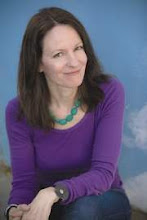The WRITING ROOM: SPRING 2009 SCHEDULE
The Writing Room is sponsored by the Emrys Foundation. Visit www.emrys.org for info.
Seminar: Out of Your Mind…And Onto the Pages
Mindy Friddle and Heather Magruder
This workshop is designed to stimulate creativity and generate ideas for fiction and nonfiction. We’ll use a series of short in-class writing exercises to inspire new work and deepen your writing. Come prepared to write in class, to share your exercises without fear or self-judgment, and above all, have some fun.
Saturday, February 21
2-4 pm
Location: Cleveland Street Branch YMCA
721 Cleveland St
Greenville, SC 29601
Cost: FREE. Space is limited, so please register.
Mindy Friddle is founder and director of the Writing Room. Her novel, The Garden Angel (St.Martin’s Press/Picador), was a Barnes & Noble “Discover Great New Writers” selection. Her second novel, Secret Keepers, is forthcoming from St. Martin's Press in May.
Heather Magruder is a freelance writer, teaching artist and workshop facilitator. Her fiction has twice won the Piccolo Spoleto Fiction Open. She has presented writing and arts integration workshops across the country.
Writing Picture Books and Young Adult Novels
(Or… It’s a Cartoon Dog Eat Cartoon Dog World)
Melinda Long
If you always wanted to put that special children’s story your parents told you, or the one you made up for your own kids on paper, then this workshop is for you. Maybe you just enjoy the delightful story-telling qualities of a good picture book or young adult novel. Learn the basic skills and deeper complexities of writing a quality, marketable picture book or young adult novel and how to begin the publishing process. The emphasis of this course will involve picture books with a section of time spent on writing for young adults.
For beginning and intermediate writers
Six weeks, Tuesdays
Starts Tuesday, February 24
6:30 – 9 pm
Cost: $180; $170 Emrys members
Location: Innovate Building Conference Room, 148 River St. Greenville
Melinda Long is author of New York Times Bestsellers, How I Became a Pirate and Pirates Don’t Change Diapers.
Don’t Bother Me. I’m Reading.
Scott Gould
The first—and perhaps most important—step to becoming a decent writer is to become a decent reader. It’s one of the immutable laws of the literary universe: To excel at fiction you have to write a lot of words…and read a lot of words. In this course, we’ll concentrate on the reading part. We’ll read and examine amazing works of fiction, both classic and contemporary. And we’ll examine these works from a craft standpoint, allowing you to learn techniques that will ultimately inform your own fiction. But wait! Don’t order yet… because we’ll also provide weekly writing prompts, helping you generate ideas for future stories. The goal? To provide you with a solid, valuable reading foundation and a catalog of new story ideas.
Eight Weeks, Wednesdays
Starts Wed. Feb 25 [no class March 18]
6:30-9 pm
Location: Governor’s School for the Arts and Humanities, downtown Greenville
Cost: $240; $230 Emrys member
Scott Gould is Chair of the Creative Writing Department at the S.C. Governor’s School for the Arts & Humanities. His poetry, fiction and nonfiction have been published in magazines and anthologies including Kenyon Review, Kansas Quarterly, Carolina Quarterly, Black Warrior Review, New Stories From the South, and New Southern Harmonies, among others.
Seminar: Writing Your Novel
Mindy Friddle
How do you go about constructing a novel? Where do you start? How do you avoid getting bogged down in the middle? Some novelists balk at the idea of adhering to a framework, and don’t discover what happens in their novels until they’ve completed a draft. Others find following guidelines and rough outlines frees them up to focus on the flow of ideas. It’s helpful to discover which kind of writer you are. In this seminar, we’ll explore strategies not only for constructing a novel, but ways to navigate the immensity of such a long work. Using in-class writing exercises, samples from master writers, and discussion, you will be inspired and motivated to start—or finish-- your novel.
Note: Students are asked to bring along one favorite novel to the seminar. The novel can be of any kind—literary, contemporary, classic, mainstream, thriller, horror, young adult, romance—the only stipulation: a published novel you have read and count among your favorites.
One-day Seminar: Saturday, Feb. 28, 1-5 pm
Location: Vino 100 , Five Forks Promenade 2531 Woodruff Road Simpsonville, SC
Cost: $100; $95 Emrys members
Quality champagne and wine served throughout for $4-$6 a glass, and cheese platters available for purchase.
Mindy Friddle is founder and director of the Writing Room. Her novel, The Garden Angel (St.Martin’s Press/Picador), was a Barnes & Noble “Discover Great New Writers” selection. Her second novel, Secret Keepers, is forthcoming from St. Martin's Press in May.
Fiction in a Flash
Heather Magruder
The “short short” story of 250 to 1,000 words, or “flash fiction,” has a market. More and more contests and literary publications, both print and online, have shifted their focus to include (or focus exclusively upon) flash fiction. Over three sessions, we’ll explore ways to craft a full story in just a few hundred words. We’ll read excellent examples of flash fiction, generate our own writing, and explore ways to pare down the word count while ramping up the energy of our stories. Also covered: how and where to submit your own piece of flash for publication.
Three Weeks, Thursdays
April 16, 23, 30
6:30-8:30 pm
Location: Innovate Building Conference Room, 148 River St. Greenville
Cost: $90, $85 Emrys members
Heather Magruder is a freelance writer, teaching artist and workshop facilitator. Her fiction has twice won the Piccolo Spoleto Fiction Open. Heather is on the South Carolina Arts Commission’s Artist Roster, is listed on Southern Artistry and is currently enrolled in the MFA program at Queens University. She has presented writing and arts integration workshops across the country.













